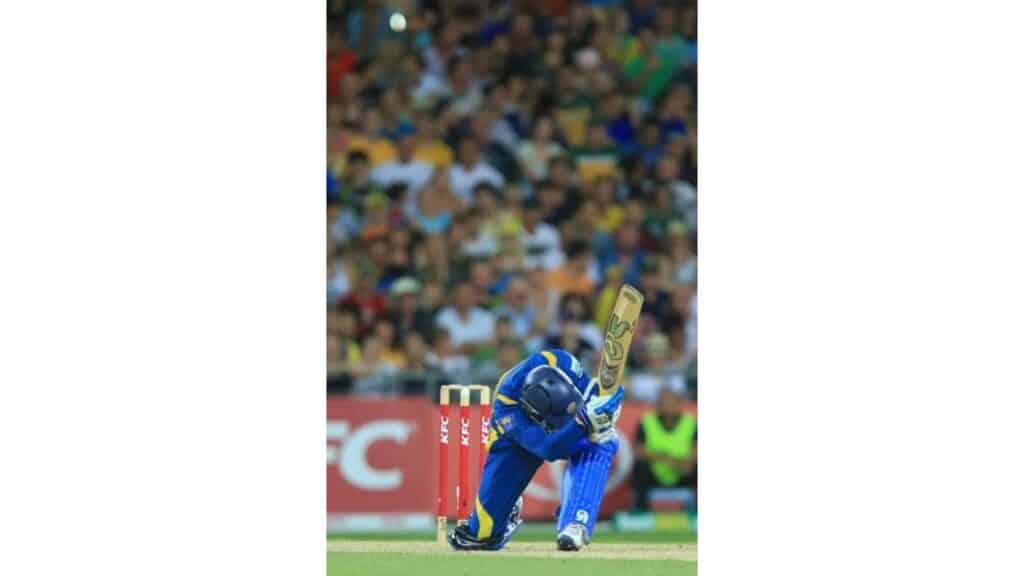

The Dilscoop is a type of “scoop” shot in cricket which was popularized by Sri Lankan batter Tilakartane Dilshan during the 2009 T20 World Cup. Before going into the details of this shot, it is important to understand the difference between the Dilscoop and the paddle scoop.

The paddle scoop is a shot which is targeted to an area between the wicket-keeper and fine leg. The Dilscoop on the other hand is hit directly over the keeper’s head. Recorded history suggests that it was in 1868, Australia’s Johnny Mullagh was the first proponent of the now famous Dilscoop, where he hit shots over the keeper’s head during an English tour. Some sources suggest that Brian Langford, the Somerset captain in 1962 also played shots over the keeper’s head during county matches. Since Langford was a tail-ender, very few buy this claim.
In modern history, Zimbabwe’s Doug Marillier is credited with popularizing the paddle scoop. In a 2001 match against Australia, Marillier hit two outrageous paddle scoops to attempt a chase of 15 runs in the final over. Zimbabwe fell shot by 2 runs, but Marillier made his own history. One year later, Australia’s Ryan Campbell hit two scoop shots over the keeper’s head in a match against Sri Lanka. This is supposed to be the first visual evidence of a shot being played over the keeper’s head, unlike Marillier’s shot that went more towards fine leg.
The 2009 T20 World Cup saw Dilshan come up with the Dilscoop variant. In India, it was also dubbed as the “Pallu shot”, as a reference to a part of an ethnic women’s wear that is worn over the shoulder. Dilshan hit this shot against Australia’s Shane Watson, where he knelt down and keeping the blade of his bat parallel to the ground, followed it exactly above his shoulder. The Dilscoop was thus born. Since then, Dilshan has hit the shot on numerous occasions. Some of them were played against deliveries that clocked over 140 km/hr.
The Dilscoop is thus a more skillful variant of the paddle scoop, requiring immense precision and accurate anticipation.





